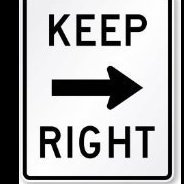Boeing 777 plane crash-lands at San Francisco airport
-
Recently Browsing 0 members
- No registered users viewing this page.
-
Topics
-
-
Popular Contributors
-
-
Latest posts...
-
43
Cases of Constipation and Hemorrhoids in Thailand?
Ok, different thing. Sorry, I'm not familiar with those. -
25
UK UK economy shrinks by the most since 2023
Interesting, BDS seems to go hand in hand with the other Syndrome infecting the United States. Left wing socialism is a horrible curse and I do not wish it on anyone. -
2
Transport Air India Flight Makes Emergency Landing in Phuket After Bomb Threat
UPDATE No Bomb Found on Air India Flight in Phuket – One Passenger Declines to Continue Journey Pictures courtesy of Khaosod. The Director of Phuket International Airport, Mr Monchai Tanon, has confirmed that no evidence of a bomb was found on board Air India flight AI 379, which was forced to make an emergency landing earlier today following the discovery of a threatening message mid-flight. The aircraft, en route from Phuket to New Delhi, was diverted back to Phuket after a note suggesting a bomb threat was found in the aircraft’s lavatory. The Emergency Operation Center (EOC) instructed the plane to park at a designated isolated stand (Bay 99) to allow for a thorough investigation. Explosive Ordnance Disposal (EOD) personnel conducted detailed searches of all passengers, their belongings and the interior of the aircraft. No suspicious items or explosive materials were discovered. Mr Monchai stated that authorities have been unable to determine who wrote the bomb threat message, as closed-circuit cameras are only installed in the front cabin of the aircraft and not in the lavatories, where the message was discovered. This lack of surveillance meant there was insufficient evidence to detain or prevent any passenger from continuing their journey. The captain of the Air India flight opted to continue proceed with the flight to New Delhi. However, one passenger chose not to continue the journey and disembarked in Phuket. The aircraft finally departed again at16:28. Officials have stressed that all necessary safety protocols were followed and there remains no ongoing threat related to the incident. Adapted by Asean Now from Khaosod 2025-06-13 -
16
Politics Anutin Moved to Commerce Ministry as Pheu Thai Tightens Grip in Cabinet Reshuffle
Yes, and he announced only a few days ago that he will be staying in his current job. So he's been fired and quite publicly. I wonder if it will break the coalition apart and force a new election -
7
Motorcycle tyres - any advice please (bad roads)
I know quite a few people that have these fitted and very happy with the performance. Pirelli Angel. -
348
Is it possible to rehabilitate a bargirl back into polite society?
When speaking to people, it is more about what they do and not do. What they say means nothing. When a girl tells you a story, she tell you what she wants you to believe, and by knowing here by time, you will learn whats true or not.
-
-
Popular in The Pub




.thumb.jpeg.d2d19a66404642fd9ff62d6262fd153e.jpeg)






Recommended Posts
Create an account or sign in to comment
You need to be a member in order to leave a comment
Create an account
Sign up for a new account in our community. It's easy!
Register a new accountSign in
Already have an account? Sign in here.
Sign In Now